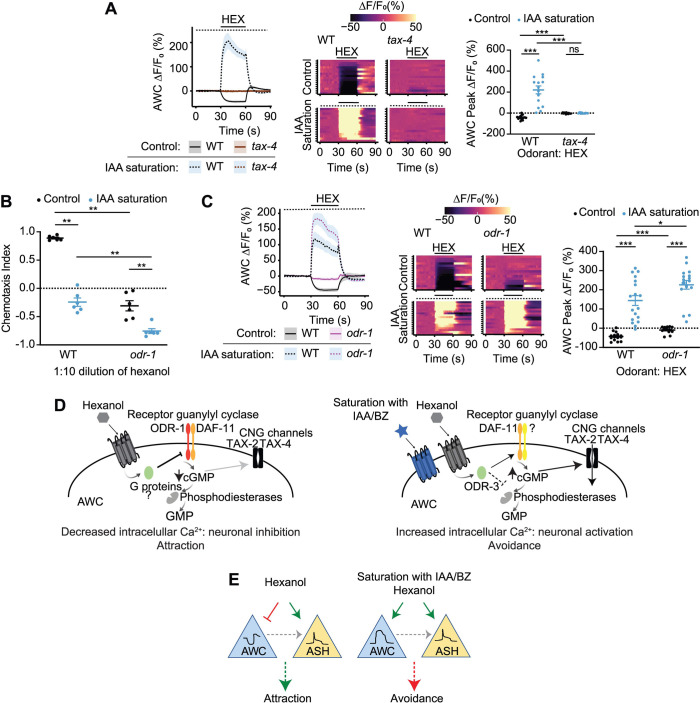Fig 4. The ODR-1 receptor guanylyl cyclase is required for hexanol-evoked inhibition but not activation of AWC.
(A, C) (Left) Average changes in GCaMP3 fluorescence in AWC in response to a pulse of 10−4 hexanol in wild-type, tax-4(p678), and odr-1(n1936) animals. The presence of saturating chemicals in the imaging chip at 10−4 dilution is indicated by a dashed line. Shaded regions are SEM. (Center) Corresponding heatmaps of changes in fluorescence intensity are shown at right. Each row in the heatmaps shows responses from a single AWC neuron from different animals; n ≥ 15 each. Control wild-type data were interleaved with experimental data in A and C; a subset of wild-type data in control conditions is repeated in these panels. A subset of wild-type data in control and sIAA conditions were also interleaved with experimental data in Fig 3D and are repeated. (Right) Quantification of fluorescence intensity changes upon hexanol onset under nonsaturated or saturated conditions. Each dot is the response from a single neuron. Raw traces of hexanol-evoked responses in AWC in control and sIAA conditions are shown in S5C Fig. (B) Behavioral responses of animals of the indicated genotypes to a point source of 1:10 dilution of hexanol on plates with or without sIAA at 10−4 dilution. Each dot is the chemotaxis index of a single assay plate containing approximately 100–200 adult hermaphrodites. Assays were performed in duplicate over at least 3 days. Long horizontal bars indicate the mean; errors are SEM. *, **, ***: P < 0.05, 0.01, and 0.001, respectively (Kruskal–Wallis with post hoc pairwise Wilcoxon test and Benjamini–Hochberg method for P-value correction). (D) Proposed model for hexanol-mediated inhibition and activation of AWC in an odorant context-dependent manner. See text for details. (E) In control conditions, hexanol inhibits AWC, and AWC-driven attraction predominates over ASH-driven avoidance. In saturation conditions, hexanol activates both AWC and ASH; either neuron can drive avoidance. AWC may modulate ASH hexanol responses via peptidergic signaling (gray dashed arrow). Underlying data for this figure are provided in https://doi.org/10.5281/zenodo.6537728. BZ, benzaldehyde; HEX, hexanol; IAA, isoamyl alcohol; sIAA, saturating IAA.

